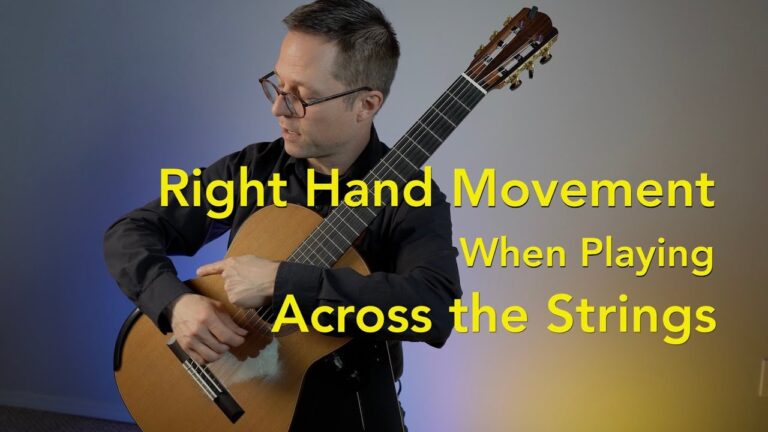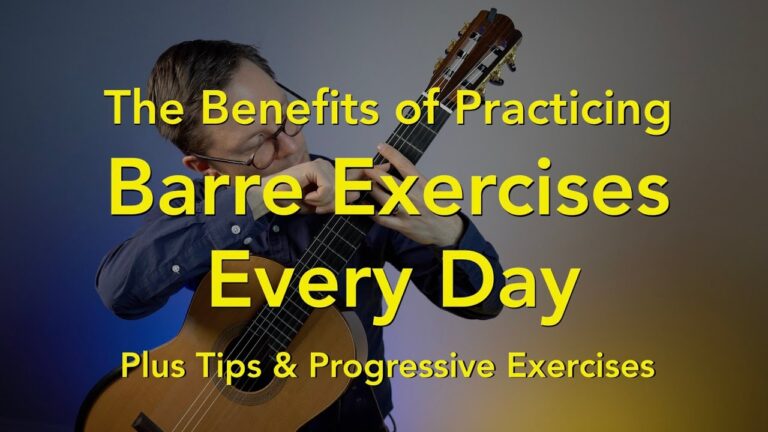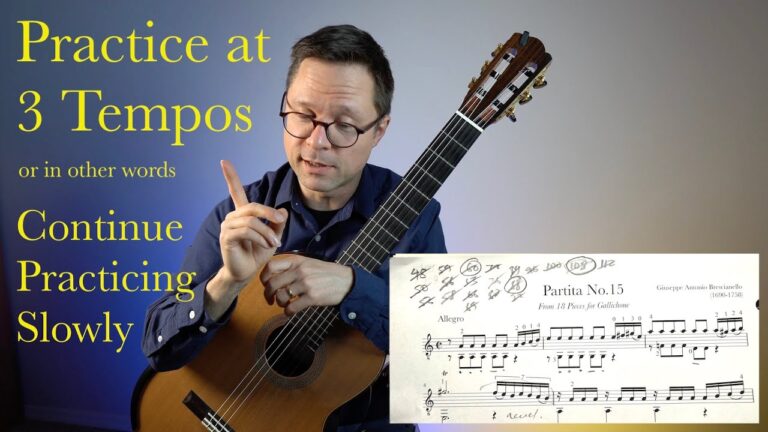Lección No.48, Book 1, by Julio Sagreras (1879–1942). Free PDF sheet music for Classical Guitar with video lesson and performance. From his 1st method Las Primeras Lecciones de Guitarra. Late-Beginner or Easy-Intermediate (Post-Method Book Volume 1). PDF download.
My Free PDF Sheet Music
This is a great little work for students who have either finished my Volume 1 Method Book or have just started my Volume 2 method. I’ll eventually be including this work in a free supplemental repertoire collection so look for that in the future. Julio Salvador Sagreras (22 November 1879 – 20 July 1942) was an Argentine guitarist, pedagogue, and composer. His many lessons are contained in a multi-volume method book that includes numerous studies. Here’s my Youtube Lesson Link if you want to watch it there.
Regarding rest strokes with the a finger: Although Sagreras marks an accent for his rest strokes with the a finger, I play this work with all free stroke. When teaching the piece I might get students to sometime practice the piece with rest stroke on the a finger to get the feel of a deeper stroke on that string but I still get them to perform it with free stroke. In general, if the B string is involved in close proximity to the E string I usually avoid a rest stroke on the E as it would mute the B string and stop the arpeggio sustain. But it doesn’t matter too much in this work so either way is fine if you are aware of the result.





Hi Bradford! I just listen intently to your video on Lesson 48 in Sageras Book 1 as I have been working on it recently with the instructor I see here in Chapel Hill NC. Both of you are on the same page of instruction on this piece about the three voices , bringing out the melody followed by the bass voice, etc. He also has demonstrated a different LH fingering around that 6th measure but a different twist. I found the change from the 5th measure to the 6th measure (it’s a D minor chord pattern!) quite daunting. To make it easier for me he pointed out to use the 3 finger on the C# in measure five, then just slide that finger up to the D on the 2nd string while forming the rest of the D minor chord, which I was quite familiar with playing chords on my steel string Gibson. It made that change from measure 5 to 6 really easy for me then. I still have to deal with the change in measure 7, but I haven’t had much problem with it compared to the initial struggle with measure 6. Thought you might want to see another twist on the fingering for that lesson. The other thing the instructor is very big on is the use of rest strokes on the melody per Sageras on all his lessons. We work completely in the Sageras book. We have skipped a few lessons and also skipped around some. Currently working on Lesson 75, but we skipped back to Lesson 66. Playing classical guitar ranks right up there with the hardest thing I have ever done! I think I lucked out with this instructor as he has taught classical guitar since the early 70s in the UNC music department, but does do a few private students on Saturday. I may be a “project” to see if he can make a complete novice into a guitarist. Maybe one day I will play these lessons as beautifully as you and he does. I am envious!
Yes, that also works in measure 5 but is a bit less intense due to the final note being an open string.